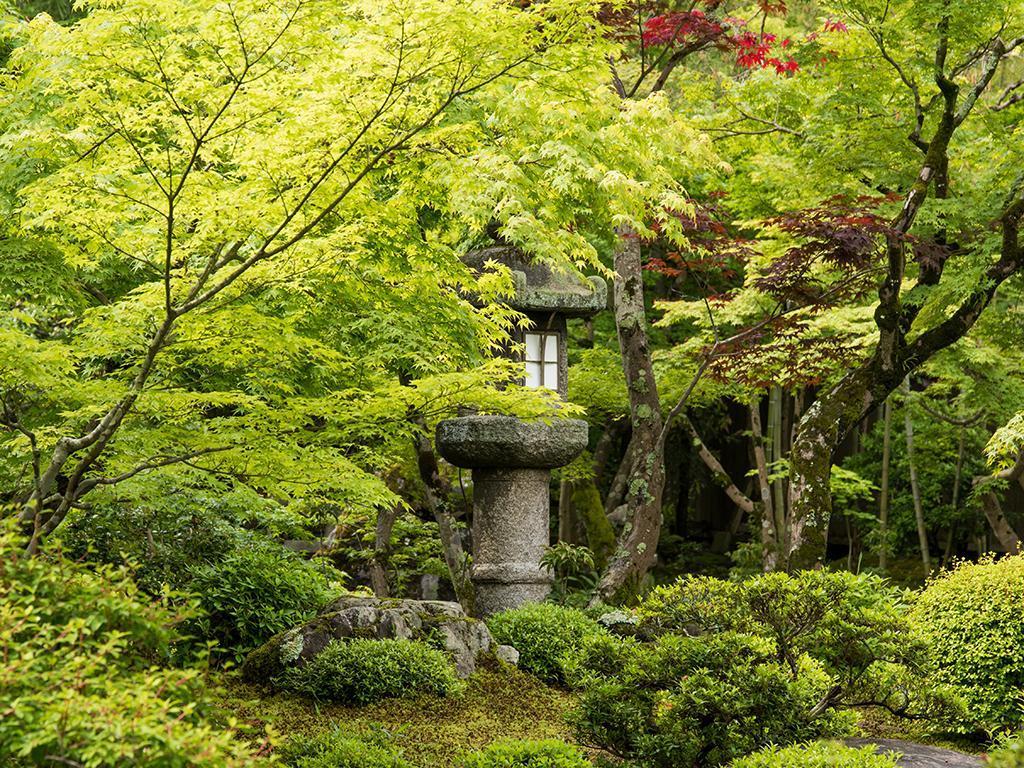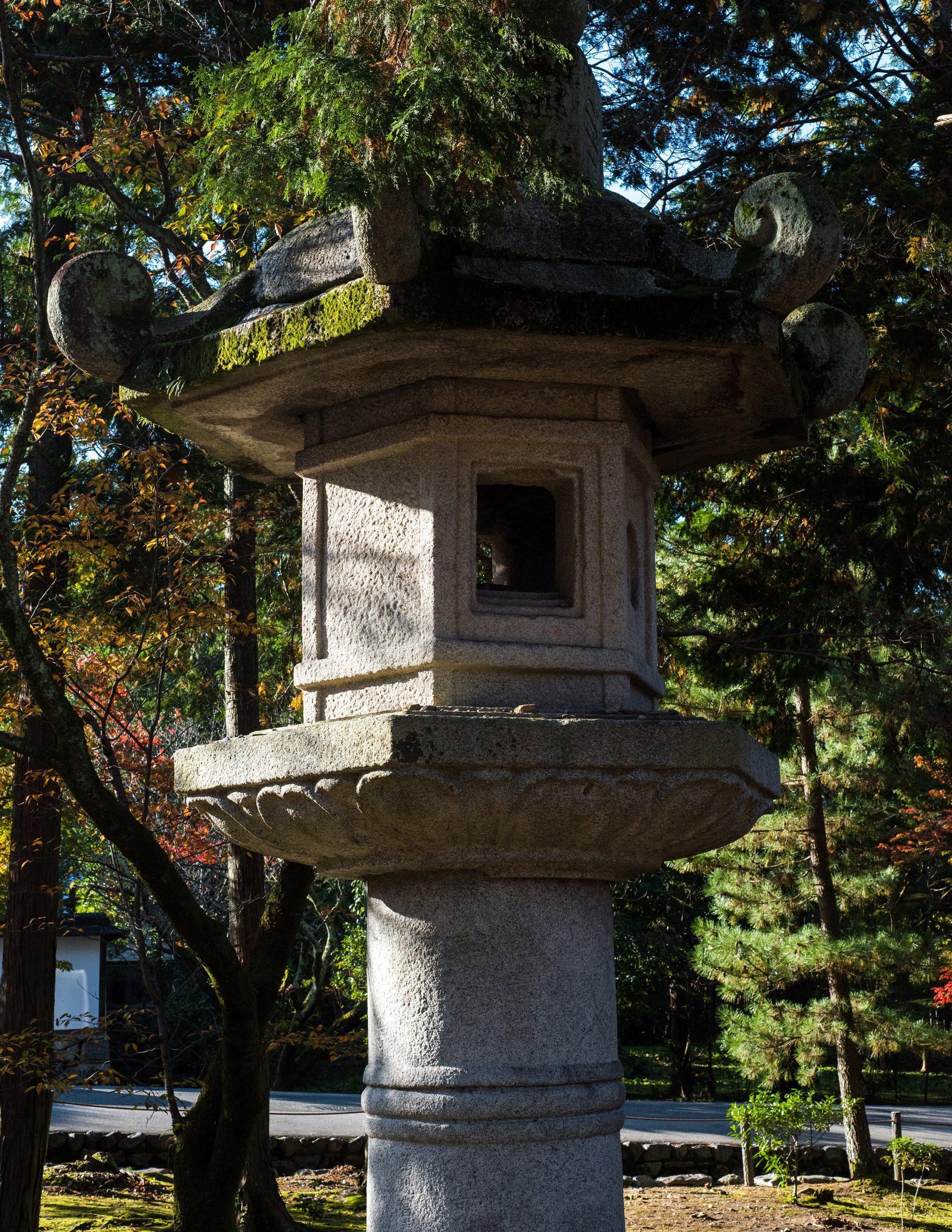Garden Knowing/
keywords
The Stone Lantern
 The stone lanterns at Dainei-ken Garden are just one of the tea garden designs creating a subdued atmosphere from a sober and detailed use of technique.
The stone lanterns at Dainei-ken Garden are just one of the tea garden designs creating a subdued atmosphere from a sober and detailed use of technique.
Japanese gardens have long been known for paying homage to natural landscapes, and for evoking and highlighting the local topography’s inherent beauty. Yet there are certain man-made objects that have become so closely identified with the Japanese garden that they seem to transcend the confines of any regional environment. Among these, there is arguably none more ubiquitous than the stone lantern. Is it ironic that, of the many features of the nature-revering Japanese garden, the stone lantern—a human invention—is today the most iconic?
Despite their seeming omnipresence today, stone lanterns are relative latecomers in the grand sweep of Japanese garden history. They were first introduced in the sixteenth century for the practical purpose of lighting guests’ way through a tea garden at night. At the same time, however, the stone lantern also has an evocative power with ancient roots in Japanese history. Already in the eighth century, lanterns were being placed in the Buddhist temples of the ancient Nara capital. By the thirteenth century, techniques for creating these devotional stone lanterns had greatly advanced, and the lanterns of this era are still among the most coveted garden ornaments today.
This widespread ubiquity suggests an important reason why tea aficionados latched onto the stone lantern in the first place. Did they perhaps seize upon the opportunity to recover stone lantern parts from devastated temples and shrines to illuminate their own tea gardens? If so, this may have suited their own pursuit of the tea ceremony’s ideal of wabi, that adoration of withered and incomplete beauty with which Japanese culture is so often identified. Perhaps this is how the stone lantern went from being a practical lighting device to an integral scenic object meant to be visually appreciated for its own sake.
Yet the stone lantern has been put to so many uses inside Japanese gardens that maybe the only thing that can be universally said about it is that its effect depends heavily on the concrete purpose it is used for and the skill and taste of the gardener positioning it in the garden. In this sense, it may be the ideal expression of the Japanese garden’s perennial celebration of the integration of human beings with nature.
 The monumental stone lantern at Nanzen-ji Temple stands 6m high, and was created after Japan’s unification in the early seventeenth century.
The monumental stone lantern at Nanzen-ji Temple stands 6m high, and was created after Japan’s unification in the early seventeenth century.
